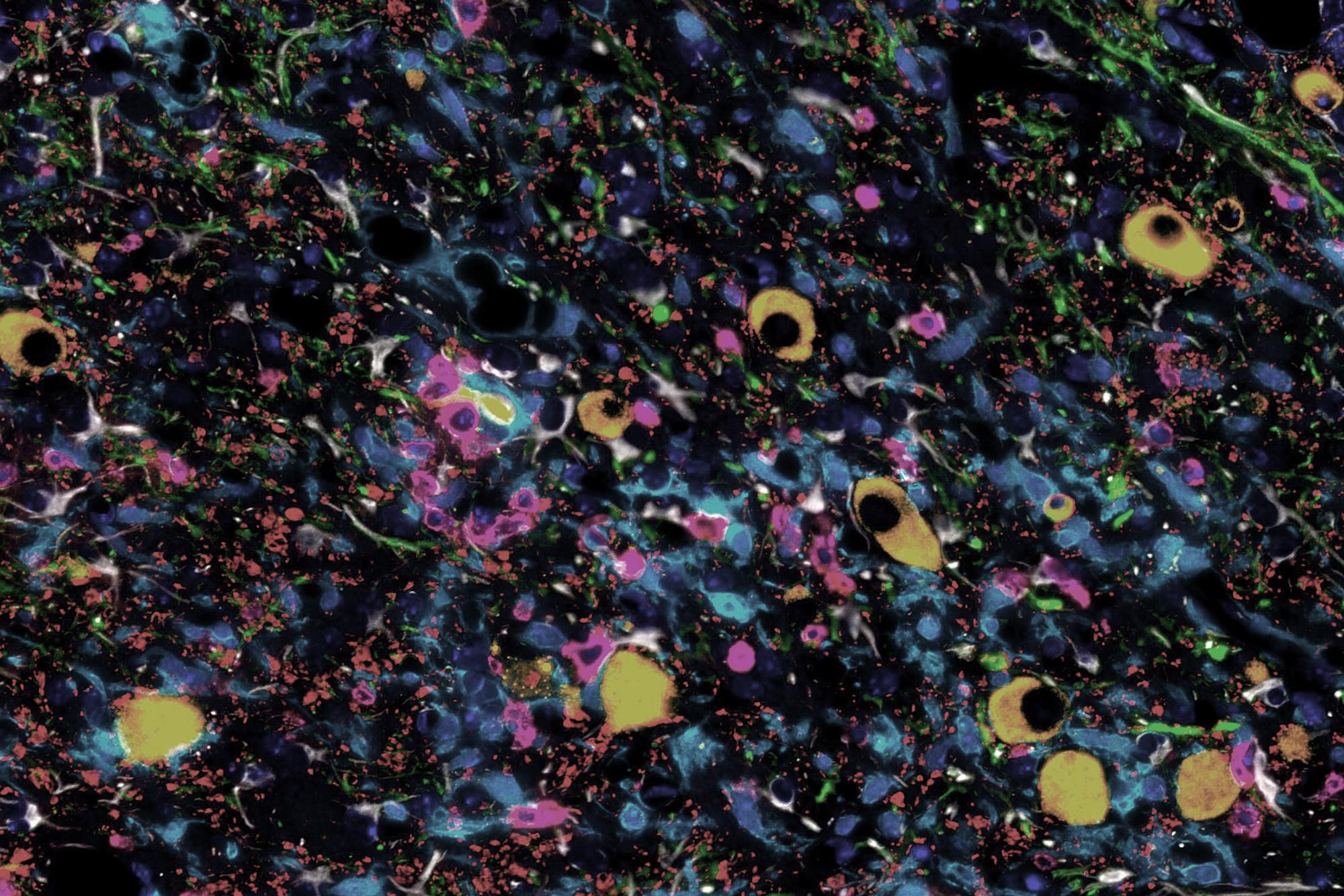Animal experiments and 3R (3/4): Immune cells live in a complex world

Some research relies almost entirely on animal models. An example is the SNSF-funded project on virus surveillance in the mouse brain.
“The immune system has a place where it is born, a place where it is educated and a place where it goes to work.” Natalia Pikor, research group leader at St. Gallen cantonal hospital, is studying one of the most complicated systems in the bodies of vertebrate animals and indeed humans. In this world, immune cells are on patrol in search of intruders. When they recognise one they produce antibodies and eliminate infected cells. Microbes and immune cells fight each other for survival. Even before the Sars-CoV-2 pandemic broke out, Natalia Pikors had been focusing on the mouse coronavirus that infects the brain of these animals.
Cells at the right time and place
Lymph nodes are a well-known and important element in the life of immune cells. These organs are part of the education system, where different cells meet in highly intricate ways like teachers and students in a school. Everybody has to be at the right place at the right time. Natalia Pikor has discovered a cluster of cells in the brain that has similarities to the cells that form the infrastructure of lymph nodes. They are positioned around blood vessels and harbour immune cells.
The hypothesis that Natalia Pikors wants to test is as follows: once the immune system has successfully controlled the mouse coronavirus, some immune cells will retreat to that space and do what she calls “immune surveillance”. In case a dormant infection wakes up, they are ready to fight right from the start. If her hypothesis is correct, then this might help us understand how viruses like measles, herpes and Sars-Cov-2 attack human brain cells after having been reactivated because of a compromised immune system. It might also help to explain how in some cases the surveillance system overreacts and causes autoimmune diseases such as multiple sclerosis.
Scanning a single mouse several times during its life
Despite these benefits, is it not tough for her to perform these experiments on mice? Most of them fall into the severity-degree 1 category (slight distress) on a scale from 0 to 3, but some also into severity degree 2. “When I started my PhD I found it very hard,” Natalia Pikor says. “But I also met with people in patient organisations who are affected by the diseases we study, and came to the conclusion that yes, the experiments are justified.”
Natalia Pikor and her research group try to minimise the harm done to the animals and maximise the knowledge gained per animal: every mouse is used to obtain as much data as possible. For example, one half of the brain is used for studying the tissue, the other for counting different types of cells. Also, new scanning techniques make it possible to observe the same mouse over its lifetime, instead of having to sacrifice one mouse per stage. With genetic breeding methods, the number of necessary generations can be substantially reduced. The mice that did not inherit the right genes can be used for other experiments. Natalia Pikor is convinced that “scientific efficiency and animal welfare often go hand in hand”.
The SNSF ensures high quality standards in research
In 2019, the SNSF provided funds for research in excess of 970 million Swiss francs. Nearly 140 million francs went to research projects that involve animal experiments. Most of these use a combination of methods of which a large proportion do not rely on animals but use cell cultures, for example. All research with animals must conform to the ethical principle of the “3Rs”: replace with alternative methods wherever possible, reduce the number of animals to the absolute minimum, and refine the experiments and the animals’ living conditions to maximise their wellbeing.
Natalia Pikor’s research into the immune system, however, relies almost entirely on mice. It is currently impossible to obtain sufficient knowledge about such a complex living system without examining the living system itself. “We cannot replicate the multiple tissues involved in an immune response in a petri dish,” the immunologist says. To achieve that, all the life stations of an immune cell would have to be recreated and connected. Each station consists of many fine layers of cells, precisely arranged to optimise the education of immune cells. This network organisation is completely lost as soon as the cells lose contact with the cells around them, as would happen in a petri dish.
Veterinary office weighs benefits and harm
Natalia Pikor received an SNSF Ambizione grant aimed at furthering the career of promising young researchers who wish to run their own research group independently. The SNSF asked internationally renowned experts in the same field to evaluate Pikor’s research proposal and verify that it uses state-of-the-art techniques and is likely to produce scientifically valuable insights. The task of weighing the benefits of those insights for society and the harm done to the laboratory mice during the experiments was the responsibility of the St. Gallen cantonal consumer protection and veterinary office (Amt für Verbraucherschutz und Veterinärwesen). Only after this office granted its authorisation did the SNSF transfer the funds to Natalia Pikor: 850,000 Swiss francs for four years.